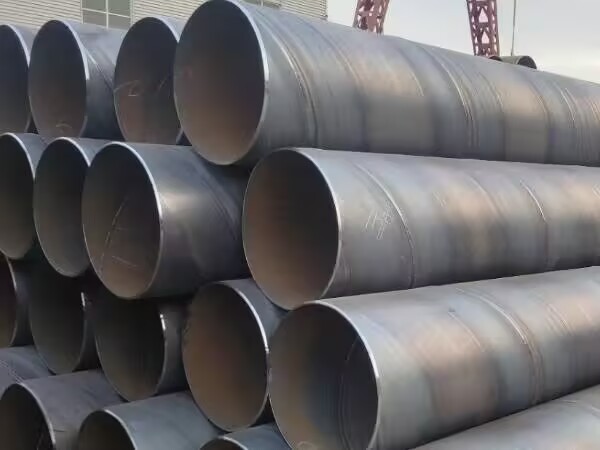Spiral submerged arc welded pipe (SSAW) is a type of welded steel pipe manufactured using a spiral forming process. It is widely used in fields such as petroleum, natural gas, water conservancy, and construction.The following is a detailed introduction to its applications in maintenance.

1. Application field
SSAW (Spiral Submerged Arc Welded) steel pipes are widely used in many fields because of their excellent physical and chemical properties. Specific applications are as follows:
Oil and gas transportation: SSAW steel pipes are widely used in long-distance transportation pipelines of oil and natural gas. It can withstand high pressure and high temperature environment, suitable for underground or offshore pipeline construction, to ensure the safe and efficient transportation of resources.
Water engineering: In urban water supply, irrigation and drainage systems, SSAW steel pipes have excellent corrosion resistance and pressure capacity, suitable for long-term use in underwater or humid environments.
Building structure: In buildings, SSAW steel pipes are commonly used as support and load-bearing structures, such as Bridges, towers and other large structures.
It provides good strength and stability and is able to withstand heavy loads and external pressures.
Environmental engineering: In sewage treatment plants and waste treatment facilities, SSAW steel pipes are widely used in sewage transportation and discharge. Suitable for use in corrosive environments, can effectively prevent pipeline leakage and pollution.
Mine engineering: mostly used for mine ventilation, drainage and wastewater treatment. It can still maintain good durability and reliability in harsh environments to ensure the safety of mine operations.
Power engineering: Protective tubes for the transmission of electricity, especially in high-voltage environments. It can ensure the safety and stability of the power system.
2. Care and maintenance
The maintenance and maintenance of SSAW steel pipes is very important, and appropriate measures can extend their service life and improve their performance. The following are detailed care and maintenance recommendations:
Regular inspection: Complete inspection of the pipeline is performed on a regular basis, including external and internal visual inspection. If potential corrosion, cracks, dents or weld defects are found, maintenance or repair should be carried out in time to avoid unnecessary losses.
Anti-corrosion treatment: Anti-corrosion treatment is recommended for SSAW steel pipes exposed to damp or corrosive environments. For example, the surface of the steel pipe is coated.
Keep it clean: Clean the inside of the pipe regularly to avoid sediment accumulation. Cleaning agents and mechanical devices can be used to remove internal dirt, ensuring smooth fluid passage and reducing flow resistance.
Temperature control: The temperature of the pipeline carrying high temperature fluid is monitored to ensure that the temperature of the pipeline does not exceed the tolerance range of the material to avoid deformation or rupture caused by high temperature.
Avoid physical damage: During construction and maintenance, ensure that pipes are not physically impacted or squeezed. Use proper tools and equipment to carry and install the equipment with care to avoid damage or crushing.
Records and management: Establish detailed maintenance records, including inspection, cleaning and repair time, content and results. In order to facilitate subsequent management and tracking, to ensure that the pipeline is in good condition during use.
Environmental monitoring: Monitor the environment where the pipeline is located, especially in corrosive areas. Timely find and deal with the impact of environmental factors on the pipeline to ensure its safe operation.
In summary:
Because of its superior physical and chemical properties, SSAW steel pipes are widely used in many fields such as oil and gas transportation, water conservancy engineering, and building structures. In order to ensure its long-term stable use, it is necessary to carry out regular inspection, appropriate anti-corrosion treatment and good cleaning and maintenance. Through effective maintenance measures, the service life of SSAW steel pipes can be significantly extended, and the safety and reliability of the project can be improved.